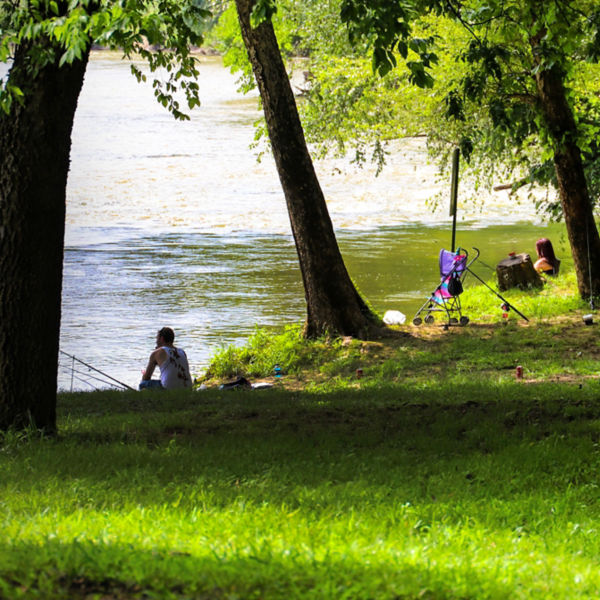
Cherokee Rock Village (CRV), formerly known as Sand Rock, is home to some of the most accessible high-quality stone in the Southeast. The two-hour proximity to metro Atlanta, plus the length of the approach itself—only about 100 feet from the parking area—is particularly hard to beat. So is the sheer variety of climbing. Here, you’ll find everything from juggy top-rope routes to techy crimp lines. At the Pinnacle, experienced leaders can pick their way up steep faces on CRV’s most famous freestanding tower. And at Fireplace Rock, challenging boulders abound.
Of course, the only way to really understand the magic of CRV is to see it for yourself. This guide will outline everything you need to do just that, including:
- Cherokee Rock Village History
- Seasons
- Recommended Routes
- Other Activities
- Getting There
- Permits and Camping
Cherokee Rock Village History
As you might expect from the name, the land surrounding Cherokee Rock Village has been of historical importance to Native peoples for centuries. This area of northeast Alabama is the historical homeland of the Cherokee, Shawnee, and Yuchi tribes.
Climbers first started recording first ascents in the area in the early 1970s. Back then, most of the new routes were trad lines. Then the bolting revolution arrived, and, by the ’90s, sport-climbing development had begun in earnest.
At that time, though, climbers remained the minority. CRV was a popular destination for ATVers, local delinquents, and graffiti artists, all of whom left their mark. For a while, it was hard to see past all the litter and spray paint. Then, in 2010, Cherokee County took notice. They bought up the land and cleaned it up with the help of the Southeastern Climbers Coalition. Now a beloved county park, CRV is one of the better-managed local climbing areas in the Southeast.
Seasons
Given the Alabama humidity, most climbers prefer visiting CRV when temps are cooler. Spring and fall tend to be most popular, with peak season striking in October and November. Around this time of year, temperatures are mild and rainfall is minimal.
Can’t help but visit on a rainy day? Head to The Hole or Sun Wall cliff, where steep overhangs keep the rock dry even when it’s pouring. The Sun Wall is also a great choice for chilly days, as it gets first light and holds heat until late afternoon.

































